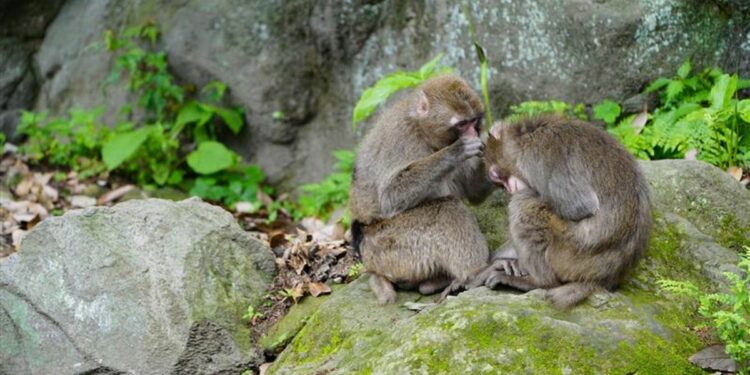Title: Why Scientists Aren’t Talking Enough About the Commonality of Homosexuality in Animals
Meta Title: The Naturalness of Homosexuality in Animals: Why Scientists are Falling Short
Meta Description: Despite the prevalence of homosexuality in the animal kingdom, scientists are not giving it the attention it deserves. This article delves into the reasons behind this oversight and highlights the importance of acknowledging and studying this phenomenon.
Introduction
The fact that homosexuality exists in the animal kingdom is not news to most people. However, what is surprising is that scientists are not talking enough about this commonality. From same-sex pairing to courtship and even parenting, there is no shortage of evidence to support the presence of homosexuality in the animal world. So why aren’t scientists acknowledging and studying this phenomenon more actively?
The Commonality of Homosexuality in Animals
It’s widely known that numerous animal species engage in homosexual behavior. From birds and mammals to reptiles and fish, same-sex activity has been observed in a wide range of creatures.
Birds are perhaps one of the most well-documented examples of animal homosexuality. Species such as albatrosses, penguins, and swans have been observed forming same-sex pairs and engaging in courtship rituals and nesting behaviors typically associated with heterosexual couples.
Mammals, too, exhibit homosexual behavior. For instance, male bottlenose dolphins are known to form long-term, exclusive bonds with one another, engaging in sexual activities and even showing signs of distress when separated. Similarly, same-sex behavior has been observed in bonobos, domestic sheep, and various primate species.
Even among invertebrates, such as insects and mollusks, instances of homosexual behavior have been documented. This widespread occurrence of homosexuality across different taxonomic groups highlights its naturalness and importance in understanding animal behavior.
Why Scientists Aren’t Prioritizing This Topic
Despite the abundant evidence supporting the commonality of homosexuality in animals, the topic has not received the attention it deserves from the scientific community. Several factors may contribute to this lack of emphasis on studying this phenomenon:
Social and Cultural Taboos: The reluctance to discuss and study animal homosexuality may be attributed to social and cultural taboos surrounding the topic. Some researchers may fear backlash or controversy, leading them to avoid or downplay the significance of this behavior in animals.
Bias and Preconceptions: Deep-seated biases and preconceptions about animal behavior, particularly regarding mating and reproductive strategies, may lead scientists to overlook or dismiss instances of homosexuality in animals. This can hinder objective observation and analysis of the natural diversity of animal sexual behavior.
Funding and Priorities: Limited funding and competing research priorities in the field of animal behavior may also contribute to the lack of attention given to animal homosexuality. Research on more conventional topics, such as mating preferences and reproductive success, often takes precedence over studying alternative sexual behaviors in animals.
The Importance of Studying Animal Homosexuality
Acknowledging and studying the commonality of homosexuality in animals holds significant implications for our understanding of evolution, ecological dynamics, and social behavior. By overlooking this aspect of animal behavior, scientists miss out on valuable insights into the natural diversity of sexual behaviors and their adaptive significance.
Benefits and Practical Tips
Benefits of studying animal homosexuality include gaining a deeper understanding of the evolutionary and ecological drivers of diverse sexual behaviors, challenging traditional assumptions about sexual selection and reproductive strategies, and contributing to broader discussions on diversity and inclusivity in the natural world.
Practical tips for researchers and institutions include promoting open dialogue and inclusivity in scientific discourse, allocating funding and resources for studying alternative sexual behaviors in animals, and actively challenging biases and preconceptions in the field of animal behavior research.
Case Studies
Numerous case studies exemplify the prevalence and significance of animal homosexuality. For instance, the long-term, same-sex bonds formed by male dolphins and female albatrosses challenge conventional notions of mating and pair-bonding in the animal kingdom.
First-hand Experience
Researchers who have firsthand experience studying animal homosexuality can provide valuable insights into the challenges and rewards of researching this topic. By sharing their experiences, they can raise awareness of the importance of studying alternative sexual behaviors in animals and advocate for greater attention to this area of research.
Conclusion
The commonality of homosexuality in animals is a fascinating and important aspect of animal behavior that deserves more attention from the scientific community. By acknowledging and studying this natural phenomenon, researchers can gain valuable insights into the diversity and complexity of animal sexual behaviors, contributing to a more comprehensive understanding of evolutionary and ecological dynamics.
By addressing social and cultural taboos, challenging biases and preconceptions, and prioritizing funding and research efforts, scientists can enrich our understanding of animal behavior and promote inclusivity in scientific inquiry. It’s time for scientists to start talking more about the commonality of homosexuality in animals and to recognize its significance in the natural world.
The Prevalence of Same-Sex Sexual Behavior in the Animal Kingdom
Homosexual behavior, including acts such as mounting, penetration, and oral stimulation, is a widely observed phenomenon in the animal kingdom. According to Josh Davis, of the Natural History Museum, London, same-sex sexual behavior has been documented in around 1,500 species, but this is likely a significant underestimate due to its presence across various evolutionary branches. The behavior has been suggested to be beneficial for social cohesion, stress release, and pleasure.
Despite its common occurrence, same-sex sexual behavior is not frequently reported in scientific literature, with only 19 percent of researchers who observed it publishing their findings. A recent study led by Karyn A. Anderson and her colleagues suggests that the lack of studies on this behavior may stem from a misperception that it is rare and therefore difficult to study systematically.
Historically, the belief that same-sex sexual behavior is rare, combined with moralistic stances that considered it deviant and “unnatural,” hindered research and publication on this subject. Even as attitudes have shifted, the assumption of rarity continues to persist in scientific literature, and journals have moved away from publishing short, anecdotal observations. This shift has led to interesting behaviors, such as same-sex sexual behavior, going unreported.
According to Anderson and her team, methodological challenges and the belief in the behavior’s rarity may explain the gap in its publication record. Their analysis revealed that 77 percent of researchers observed same-sex sexual behavior, but only 48 percent collected data on it, and even fewer published their findings. The researchers’ inability to collect data due to competing priorities, the lack of reliance on data related to this behavior for publication purposes, and the perception of its rarity as reasons not to publish may contribute to the underreporting of same-sex sexual behavior.
Furthermore, the underutilization of anecdotal reports and surveys in wildlife biology has limited the understanding of the relevance and distribution of same-sex sexual behavior across mammals. Expert surveys prove to be necessary tools to examine these behaviors on a broader scale and better understand their variability and distribution.
Ultimately, it is essential to recognize the value of these “less fashionable” methods of collecting and transmitting information, especially for supposedly rare behaviors. While the study’s pool of respondents was relatively small, its findings emphasize the importance of acknowledging and reporting on same-sex sexual behavior in efforts to understand and conserve diverse behaviors in the animal kingdom.
The study is available in PLOS ONE, and for further insights, refer to the July 2024 issue of CURIOUS for an excerpt from A Little Gay Natural History and an exclusive interview with Josh Davis.






